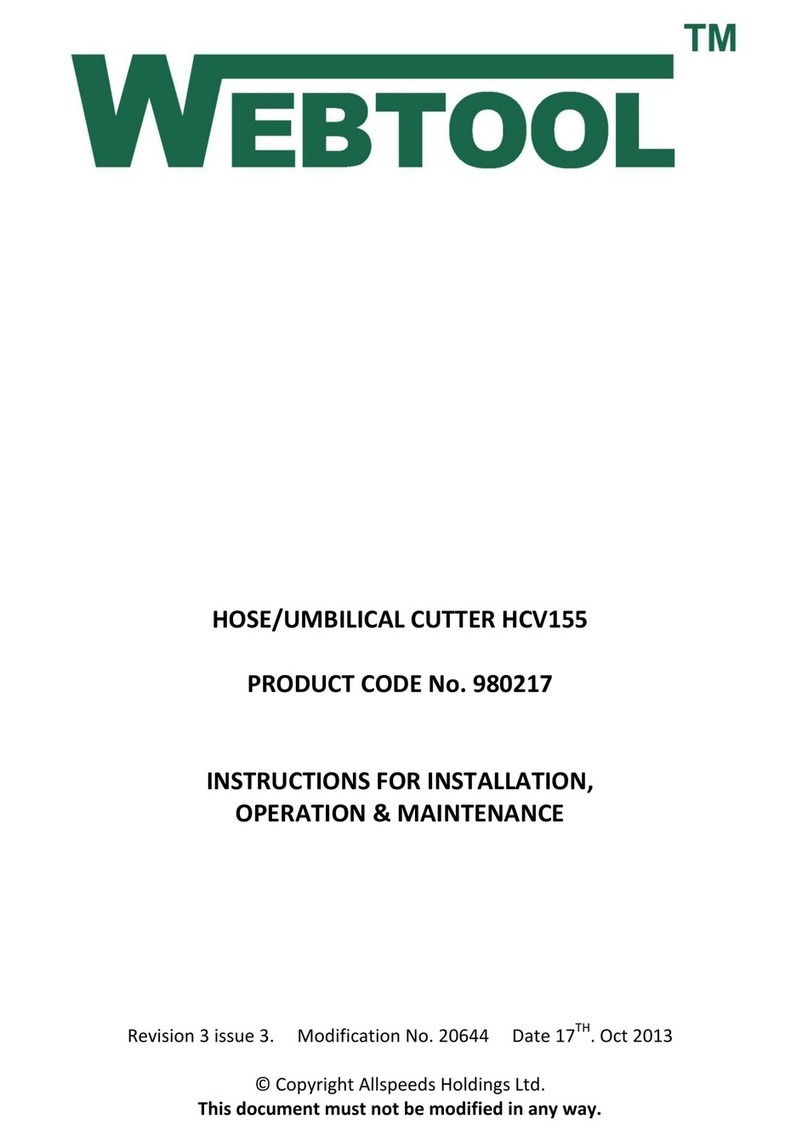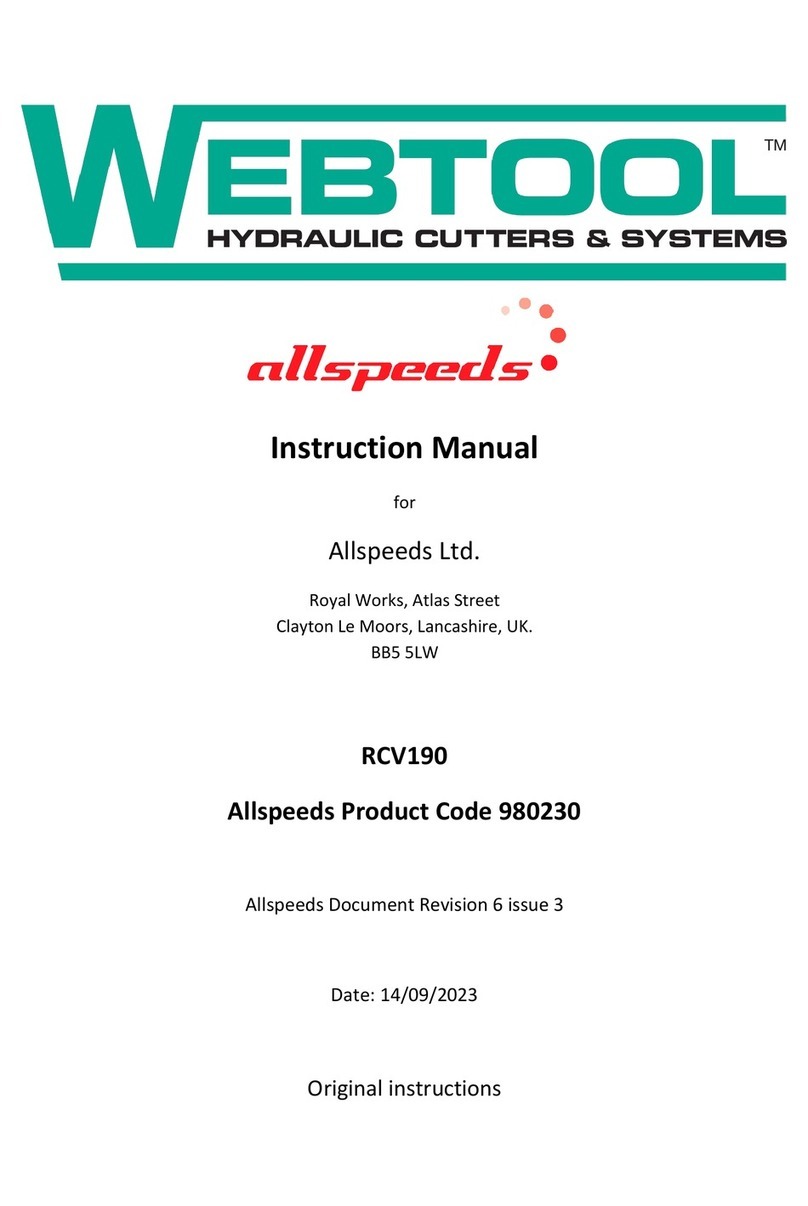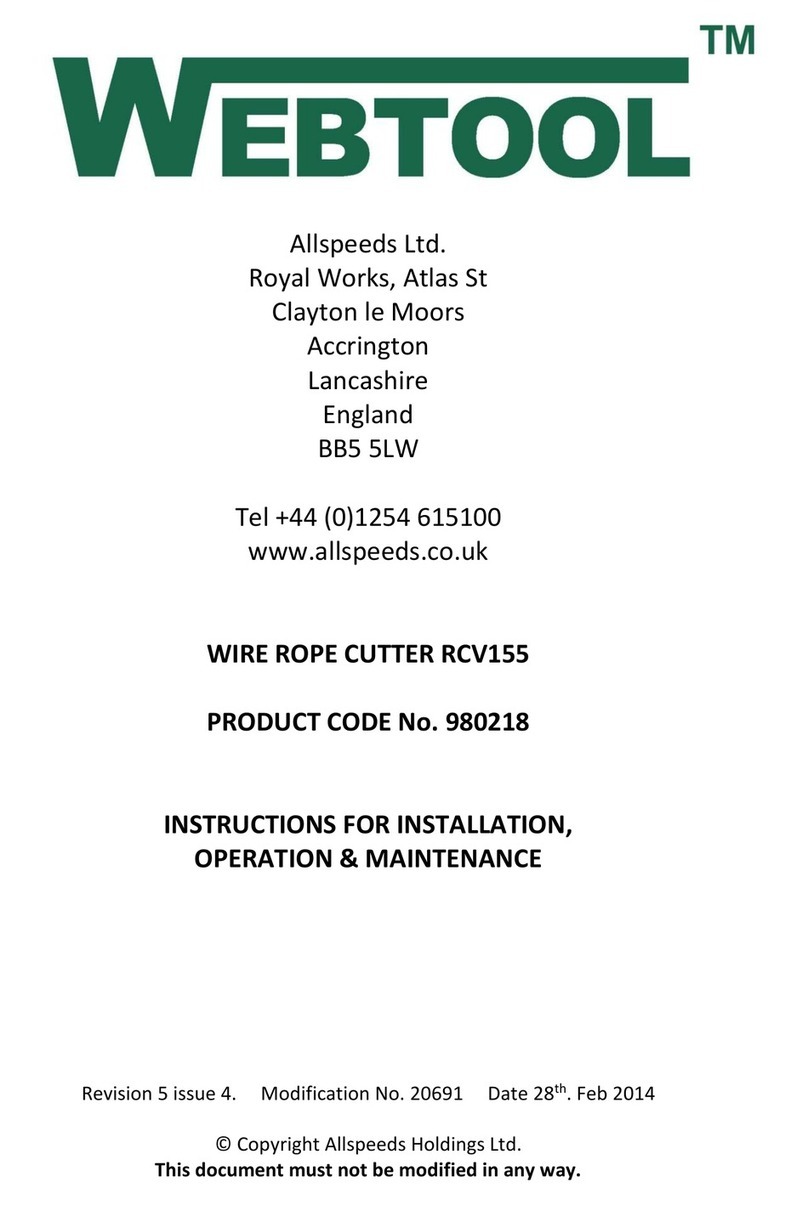
Page 7of 16
N.B. Do not operate the auxiliary cylinders when the main ram is fully extended since this would
damage the anvil.
Please note that this tool has a relief valve fitted which will blow off at approx. 750 bar, DO NOT
leave the pressure on so that the relief valve is continually blowing off.
TROUBLESHOOTING
If the hose does not cut through completely on the first attempt, cycle the blade by retracting it
slightly and then attempting the cut again.
If the hose does not completely cut after multiple cycles of the blade, check the input pressure
to the main input of the cylinder. This can be a maximum of 700 bar (10,000psi).
If the rope to be cut is still not severed after multiple cycles and at a pressure of 700 bar, retract
the blade and then the anvil and return the tool to the surface for inspection of the blade and
anvil, replace if necessary.
IMPORTANT NOTE –ENSURE THAT THE BLADE IS FULLY RETRACTED AND THAT ALL PRESSURE
TO THE CUTTER IS RELIEVED AS IT IS RAISED TO THE SURFACE. FAILURE TO DO THIS CAN LEAD
TO A DANGEROUS BUILD UP OF PRESSURE IN THE CYLINDER.
5. AFTER USE
When the tool is retrieved, it should be hosed off with clean water, allowed to drain and
sprayed externally with a de-watering fluid. Before storage, inspect the general condition of the
tool. Particular attention should be paid to the anvil and blade. The anvil should be clean and
free from any damage or bruising on the outside diameter that would prevent it from retracting
properly. The blade edge should be smooth and free from any serrations. Note that a slight
ripple to the blade edge is acceptable and will not cause problems. Any minor damage can be
smoothed off with an oil stone if necessary.
IMPORTANT: Please note this tool is designed for intermittent subsea use. Please refer to the
manufacturer should you wish to use this tool subsea for any period over 14 days.
6. SERVICE
It is unlikely that service would be required on the hydraulic components of the tool under
normal circumstances, but a seal spares kit is available if required. The only parts that would
need intermittent replacement would be the anvil and blade depending on the frequency of use
and materials being cut. These parts can be ordered up on the following spares reference
numbers, but in addition please quote the tool serial number.
Seal Kit Part Number 995 288
Anvil Part Number SSC 6488
Blade Part Number 705 050C
We advise that any servicing should be carried out by an authorised distributor only.
If required, the tool can be returned to the manufacturer for servicing and testing.































